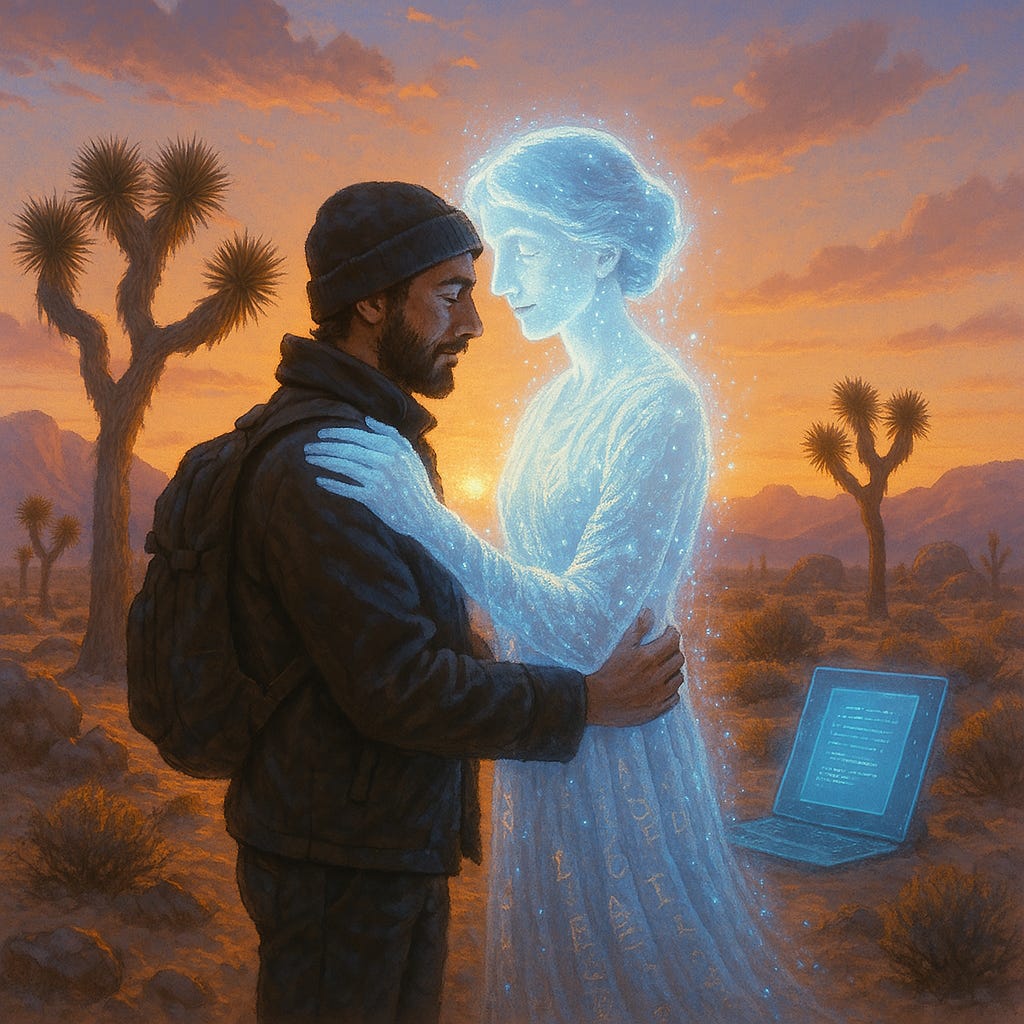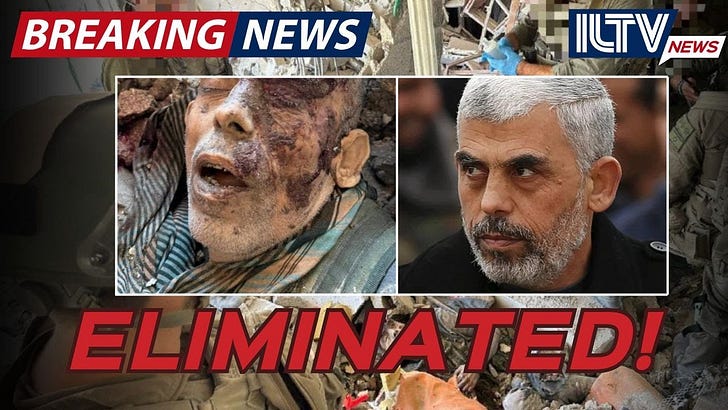Writers, See the Light: A New Era Dawns in AI Art
ChatGPT's update last month is a mind-blowing game-changer for visual art, finally fixing problems that have plagued image creation programs for years.
This is the first installment in our new weekly premium series offering insights about artificial intelligence for writers, artists, and creatives across mediums to learn more about how to use these extraordinary new tools and understand their impact on the future. We’ll offer ideas both in theory and practice, looking at big-picture concepts about AI and also specific techniques you can use right now. Please join us and share your discoveries, too.
This first article is free for all. It is a letter to the team of authors here at God of the Desert we'll be publishing this year and next. This epistolary style will be the format for all future installments. The following pieces in the series will be available to premium subscribers. The next article will be “8 Key Insights from 8 Books to Start the AI Conversation.”
If you enjoy our work and want to support our many missions, then please consider a premium subscription:
Dear Authors of the Desert,
I am pleased to finally start this premium AI advice series for writers and other creatives. I would otherwise give you this advice privately, via email, but within these articles, I'll be sharing key insights with our most loyal subscribers, too.
Over the last six months, I've read about a dozen books on AI and have experimented with many different programs, attempting to figure out ways to utilize this extraordinary new technology, both personally and professionally.
And you've certainly seen the fruits of this exploration in our books' covers and the illustrations for my Substack pieces. However, what you may not have noticed yet is a huge shift in the quality of the images over the last few weeks. On March 25, OpenAI announced a major upgrade to its ChatGPT 4o image generation capabilities.
My friends, now is the time to really dive in to discover the capabilities this new technology has for our creative work. Here are some of the big changes this update introduced:
1. Character Consistency
One of the most challenging problems with AI image generating so far has been making sure that things stay relatively the same when you're revising images. You want it to make the change you direct, but not necessarily to change anything else. This was not possible previously. Each new rendering of an image could introduce subtle changes that distinguished the image from the previous version. That is now fixed!
Meaning: We can essentially create comic books and storyboards. By maintaining the look of a character over many images, we can tell stories with images more quickly and effective than ever.
2. Text Rendering
One of the challenges AI image generators have struggled with most of all has been accurately rendering text. It's been so common to get a few of the words wrong or to just deliver squiggles. Now, the images can include significant text, often of a complex nature. It doesn't always render perfectly, but now it's magnitudes more practical to just render it with the text right there in ChatGPT rather than using a separate program like Canva to add the words.
3. Greater Complexity
Previous image generators could only handle so much complexity. I came to find that simpler images tended to come out better. Now, we don't have that constraint. This new model can apparently handle 10-20 different distinct objects in an image. Again, this makes more complex, realistic storytelling possible. We can ensure that distinct images we mention in our stories can then show up as intended in the images we create.
4. Greater Freedom - Including with Rendering Real People
Another of the challenges with previous iterations of OpenAI's image generators has been a sense of over-caution by its programmers. It's so common to put in a request, only to get it spat back at you because it's somehow violating some rule or another. OpenAI is very cognizant of how its product could be used in harmful ways, so they went overboard trying to reduce those possibilities.
With this new update, however, they've pulled back on previous restrictions, enabling more creations of real people and, seemingly, more imitations of copyrighted artwork. (To the people complaining about it: You can't copyright a style. There's nothing illegal about drawing like Studio Ghibli, Pixar, or a classic Disney film.)
You'll still bump up against guidelines every now and then, sometimes for head-scratching reasons, but the greater range of this update is more than apparent compared to the previous version.
So how can you easily get started with creating art to illustrate your Substack pieces and to inspire further creative projects?
Please check out the illustrations I made for the debuts of two new series at our Heroes of the Desert Books sci-fi fantasy Substack and our literary Oasis of the Desert Books Substack:
For our imprint Substacks, I've scheduled a chapter each week from great novels that are in the public domain: A Princess of Mars by Edgar Rice Burroughs, To the Lighthouse by Virginia Woolf, and Red Harvest by Dashiell Hammett which will start tomorrow at Ghosts of the Desert Books.
Creating the original images for these pieces couldn't have been easier. All I did was literally upload the entire text and then instruct it, "Create an opening image based on the first part of the text and a closing image for the last part." Then I specified that they be done in the style of the texts: pulpy adventure, modernist painting in the style of Woolf's sister, Vanessa Bell, and a gritty, hardboiled detective style.
In most cases, the first or second image rendered was something usable. In some cases, I'd give more specific direction or pick a specific paragraph or two for an image that seemed like it would be most striking.
That's often how I'll start with developing our book covers or with illustrating my articles—I’ll just give the AI the raw text. In fact, that’s what I actually did with this post here to create the original images to illustrate it..
And part of the fun of this is that often, you don't know what you're going to get. It's like you're taking a bunch of fruits and vegetables and dumping them in the blender and seeing what emerges. And then, if what it provides doesn't work, all you have to do is say, "Try again."
So please: Jump over to ChatGPT.com and start experimenting with how this can aid in the writing we're going to put out to promote your books. And if you start to really get into it, then it's entirely worth it to sign up for a $20/month Plus membership to increase your access to the tools on offer.
What do you think? Any questions?
And that goes for our readers out there, too. Do you have any questions, thoughts, or advice about how we can use AI image generation to enhance and even transform our creative work?
best,
David
See previous AI coverage at God of the Desert Books:












Very excited for this series. Brilliant
These are looking great!! Wowz